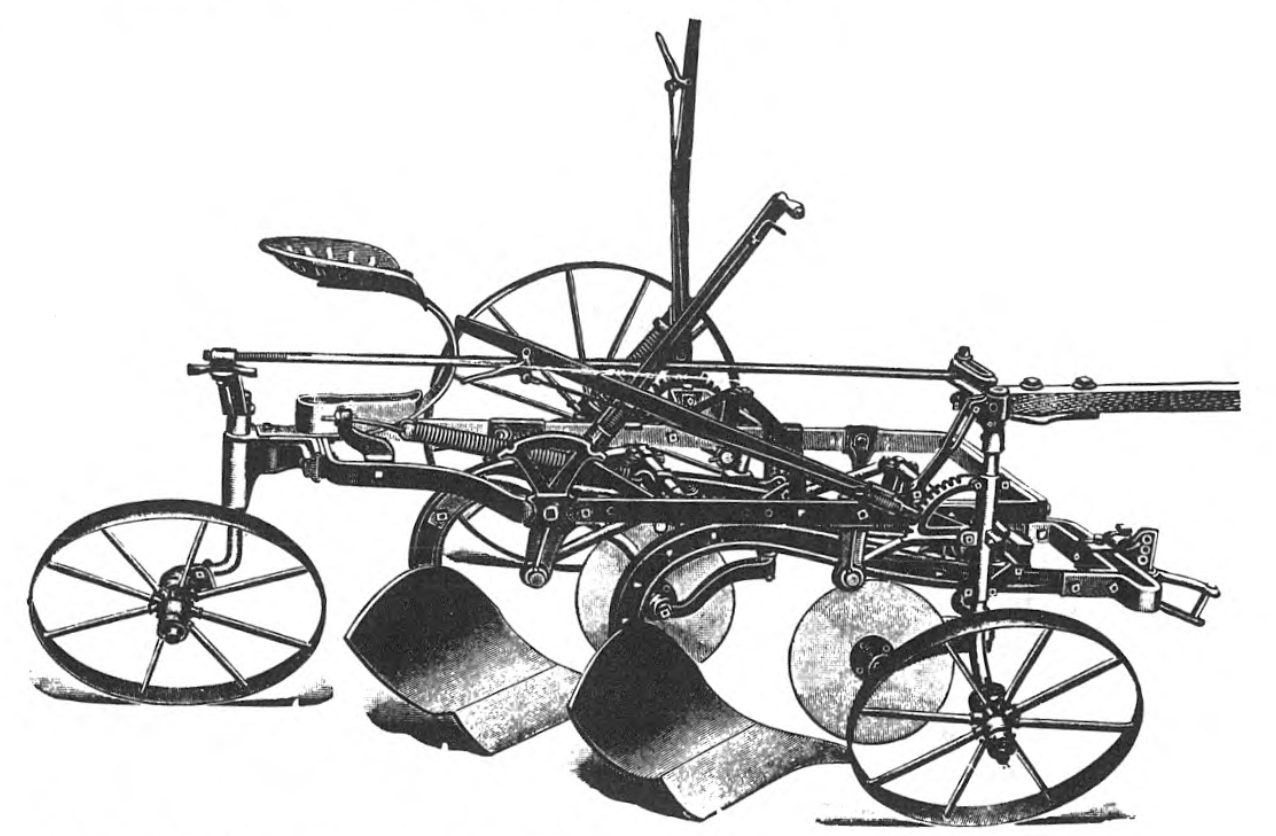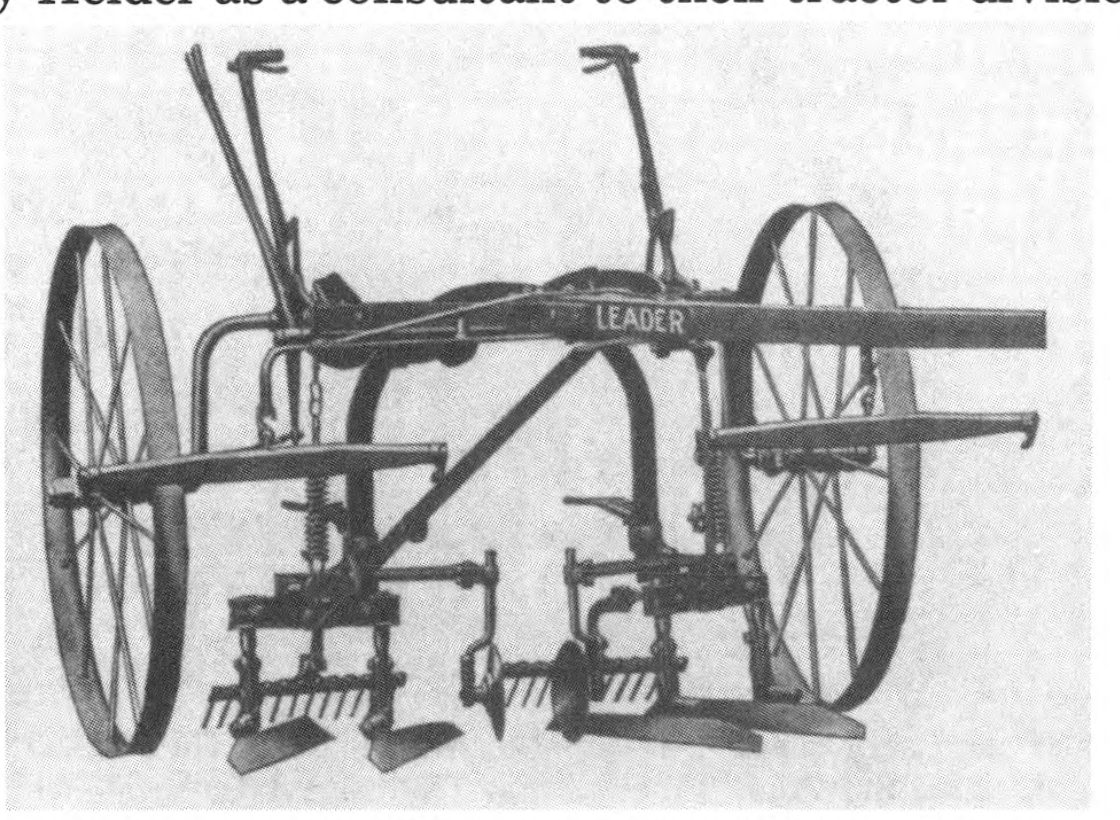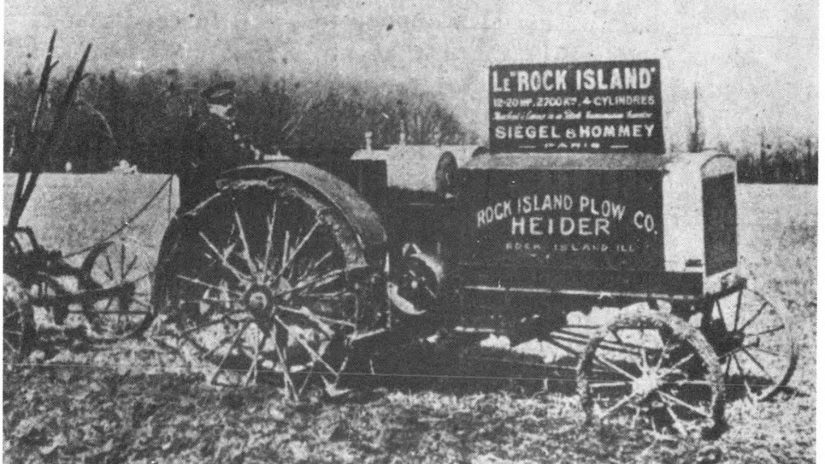Of all the companies acquired by J. I. Case, the Rock Island Plow Company remains as one of the most significant. Curiously though, Case closed out the Rock Island tractor line, preferring to remain with their already established models.
Sometime in 1855 the firm of Buford & Tate was organized at Rock Island, Illinois. Conceived by Charles Buford and R.N. Tate, the new company began by building plows and other farm implements. Then during the Civil War period, Tate sold out to his partner, and the latter reorganized as Buford & Company. The business continued under this title until 1882. At this time it took the title of Rock Island Plow Company. An interesting sidelight is the earlier appearance of R.N. Tate. Apparently in 1847 or 1848 Mr. Tate and J.M. Gould were partners with John Deere in the plow business. Tate and Gould sold out to Deere in 1853. Two years later Tate reappeared in the plow business.
In 1882 a disastrous fire destroyed virtually the entire factory. No sooner had the ashes cooled than Rock Island Plow Company appeared, a new name and with new factories.
The 1875-1900 period saw millions of acres put under the plow, so demand for primary tillage implements was tremendous. Plow companies by the dozens emerged, all hoping to carve their own niche of success. For those like Rock Island, who were conspicuously successful, prosperity was assured. Early company catalogs display a huge variety of plows and tillage implements; the plow line alone numbered well over a hundred styles and sizes.
During the early 1900s Rock Island saw a need to diversify and broaden its product lines. Sales of tillage implements were highly seasonal, a certain degree of market saturation was manifest, and by adding other machinery to the line, a certain amount of sales revenue was coming in throughout the year.

Details of early additions to the line are now vague. However, it appears that much of the Great Western Line from Smith Mfg. Company was in the RIP (Rock Island Plow) catalog prior to 1910. Smith was a Chicagobased company organized in 1901 to manufacture manure spreaders, automatic hay carriers, and other farm implements. On October 1, 1911 RIP announced that they had secured a “ permanent marketing agreement” for the complete Great Western line. Within a year, Rock Island had dropped the Great Western gasoline engines in favor of the Chanticleer Line from Jacob Haisch Company. The latter operated at DeKalb, Illinois and built a variety of machinery from gas engines to wire fence manufacturing machinery. Thus far no definite information has surfaced to indicate whether RIP actually bought out Smith Mfg. Company. The Chanticleer line did not long remain in the Rock Island catalog. By 1916, and possibly earlier, a new series was being offered. This time the engines were being built by Alamo Mfg. Company at Hillsdale, Michigan.
The 1900-1912 period saw a wide expansion of the Rock Island product lines. In addition to the usual tillage implements, RIP added such diverse items as manure spreaders, litter carriers, and other machines. Existing lines were broadly expanded; the 1912 implement repair catalog was a big book of over 400 pages!
In keeping with their plans to diversify and expand, RIP began looking for a tractor design in 1913, and perhaps earlier. At any rate, Rock Island began selling a few Heider tractors that year. The following year Rock Island and Heider initialed a formal contract whereby the latter was to furnish their Model B tractor. In January 1916 Rock Island bought out the tractor department of Heider Manufacturing Company, moved it from Carroll, Iowa to Rock Island, and retained Henry Heider as a consultant to their tractor division.

Henry and John Heider had formed the Heider Manufacturing Company in 1903. Initially located at Austin, Minnesota the new company made plow eveners following one of Henry’s patented designs. A year later the factory was moved to Carroll, Iowa. Within another year the Heider Mfg. Company was a going concern that was producing eveners, neck yokes, and an extensive line of wood ladders.
By 1907 Henry Heider had dreams of building a tractor. In 1908 and 1909 work progressed on a prototype; it advanced to the point that a patent application was filed in 1911. Two years later, Patent No. 1,055,635 was issued. By 1913 however, the original rear-mounded engine design had been changed. This is clearly illustrated in Patent No. 1,154,767 issued in 1915. Heider Model A and Model B tractors used the rear-mounted engine design. The conventional front-mounted engine first appeared in the Model C of 1914. In 1916 or 1917 the Heider Model D tractor appeared. It was virtually a carbon copy of the Model C, but was smaller.
About 1919 Henry Heider was retained to design a new tractor which would be known as the Model E. In 1925 the new model, the 15-17 appeared. It was apparently a replacement for the Model C. The 15-27 was tested at Nebraska under No. 114 of 1925. Also in this time frame, Heider designed the 5-10 Model M motor cultivator. Like others of its design, the Model M achieved little popularity and was scratched from the sales book by 1926.
Work continued on an 18-35 friction drive model, but if it indeed ever went into full production, sales appear to have ended in a few months during 1929. The friction drive so typical of Heider tractors had been outclassed by the selective sliding gear transmission.
Henry Heider resigned his position with Rock Island in 1922, but the tractor line carried the Heider name until 1927. That year Heider introduced its 18-35 geardrive tractor.
Rock Island’s 18-35 appeared in 1927. Its robust unitframe design carried a Buda four-cylinder engine. Two years later the G-2 tractor was introduced. In this series the 15-25 was a distillate-powered model, and the 18-30 used gasoline fuel. Except for this difference, the two G-2 models were the same.




